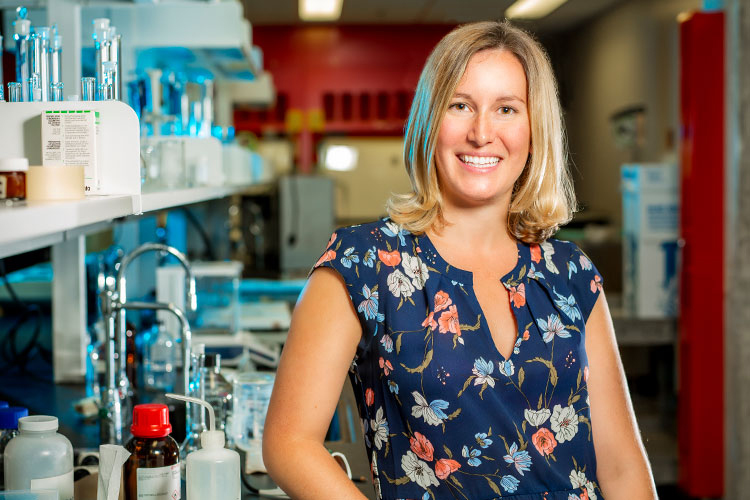Reducing phosphorus in waterways

![]() Dr. Darshani Kumaragamage is dispelling the myth that farmers and livestock producers are to blame for increased phosphorus release into waterways, leading to algae blooms in Lake Winnipeg. Through a Natural Sciences and Engineering Research Council of Canada (NSERC) Discovery Grant, the associate professor of environmental studies and sciences has been looking at ways farmers can reduce phosphorus runoff during the spring snowmelt.
Dr. Darshani Kumaragamage is dispelling the myth that farmers and livestock producers are to blame for increased phosphorus release into waterways, leading to algae blooms in Lake Winnipeg. Through a Natural Sciences and Engineering Research Council of Canada (NSERC) Discovery Grant, the associate professor of environmental studies and sciences has been looking at ways farmers can reduce phosphorus runoff during the spring snowmelt.
But how does phosphorus get into the snowmelt runoff? Kumaragamage says when snowmelt water is stagnant on a field for as long as two or three weeks, soil releases phosphorus into the overlying water.
And when the snowmelt water goes into waterways—that’s when the issues begin.
In addition to her NSERC Discovery Grant, Environment Canada also awarded her a grant to look at certain soil amendments, and to see if they could reduce the amount of phosphorus that flows into flood water.
The idea, she said, was if farmers could point out what areas in the field get flooded during the spring, then an amendment can be applied to the soil in that area, which will reduce the amount of phosphorus being released from soils during the snowmelt.
Five amendments were studied, which included gypsum, alum, magnesium sulphate, ferric chloride and calcium carbonate. However, it’s too early to say which is the most effective and practical to use without doing field trials.
The next step is to start working with more Manitoban farmers. The goal is to go to fields that flood and take snowmelt runoff samples with, and without soil amendments, and analyze them for phosphorus.
Come spring 2021, Kumaragamage said work will shift to farmers’ fields where they will, hopefully, begin testing the amendments.
“I think it’s important to reduce the contribution of phosphorus into waterways,” she said. “If every sector minimizes their contribution, then we’ll be able to see a real reduction.”
This article was adapted and republished with permission from the University of Winnipeg.
Up next

Improving wastewater decontamination
At Concordia, with a team of 15 undergraduate, graduate and visiting researchers, Howarth focuses on the design and synthesis of rare-earth metal-organic frameworks targeting applications in wastewater remediation and chemical sensing.